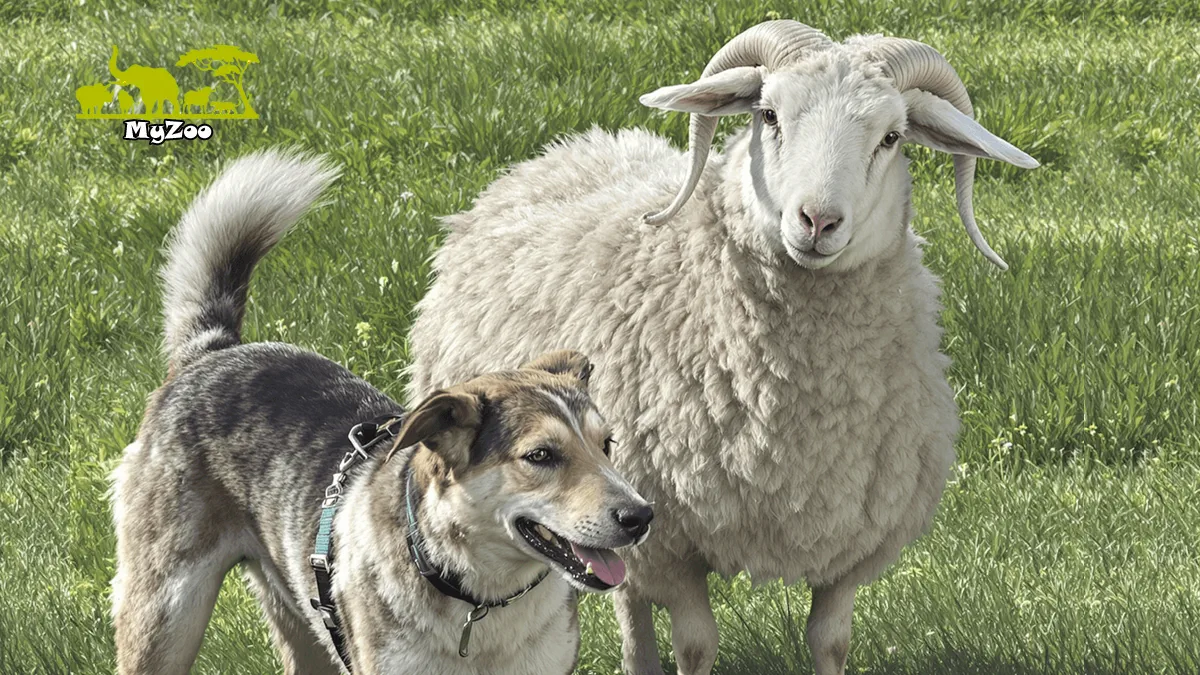
7 Effective Ways to Treat Lameness Naturally
Watching your beloved pet or valuable livestock struggle with lameness can be distressing. This common condition, marked by limping or the inability to use a leg properly, affects countless animals each year. Whether it’s your family dog battling arthritis or sheep dealing with foot rot, lameness poses significant challenges to animal welfare and productivity.
Natural treatment approaches have gained recognition for their effectiveness in managing lameness. These methods work by:
- Supporting the body’s natural healing processes
- Reducing inflammation without harsh chemicals
- Addressing root causes rather than just symptoms
- Minimizing potential side effects
- Promoting long-term joint and muscle health
In this comprehensive guide, you’ll discover proven natural strategies to treat lameness in both pets and livestock. You’ll learn essential first-aid techniques, holistic veterinary approaches, and preventive measures specific to different animals. We’ll explore real case studies demonstrating successful natural treatments and help you identify when professional intervention becomes necessary.
What sets natural treatments apart:
- Safe for long-term use
- Cost-effective solutions
- Environmentally friendly options
- Complementary to conventional treatments
By implementing these natural approaches, you can help your animals recover from lameness while maintaining their overall well-being. Let’s dive into these effective treatment methods that have helped countless animals regain their mobility and quality of life.
1. First Aid for Lameness in Pets
Quick action during the first signs of lameness can prevent serious complications in your pets. Here’s how to provide immediate care when you notice your dog or cat limping:
Examining the Injured Leg
- Check between the toes for foreign objects like thorns or glass
- Look for swelling, cuts, or bruises
- Feel for heat in the joints or muscles
- Notice if your pet shows pain when touching specific areas
- Watch their walking pattern to identify which leg is affected
Essential Non-Emergency Care Steps
- Rest – Restrict movement for 24-48 hours
- Ice packs – Apply for 15 minutes every 2-3 hours
- Clean wounds with mild antibacterial soap
- Soak injured paws in warm Epsom salt solution
- Bandage any cuts or torn pads
- Create a quiet, comfortable recovery space
Pain Management Options
- Natural supplements:
- Glucosamine for joint support
- Omega-3 fatty acids to reduce inflammation
- MSM (Methylsulfonylmethane) for tissue repair
- Green-lipped mussel extract
- Veterinary-approved medications:
- Non-steroidal anti-inflammatory drugs (NSAIDs)
- Joint support medications
- Pain relief prescriptions
Red Flags for Immediate Vet Care
- Inability to put any weight on the leg
- Visible bone or deep wound
- Severe swelling
- Signs of infection
- Lameness lasting more than 24 hours
- High fever
- Loss of appetite
Remember to document your pet’s symptoms and take photos of visible injuries. This information helps track recovery progress and provides valuable details if veterinary care becomes necessary.
2. Holistic Veterinary Care for Lameness
Holistic veterinary care takes a comprehensive approach to treating lameness by addressing both the immediate symptoms and underlying causes. This method combines traditional veterinary medicine with alternative therapies to create a balanced treatment plan.
Integrated Treatment Approaches
- Acupuncture sessions to stimulate natural healing
- Chiropractic adjustments for proper alignment
- Massage therapy to improve circulation
- Physical therapy exercises tailored to your pet’s condition
- Herbal supplements to support joint health
Your veterinarian might prescribe anti-inflammatory medications while simultaneously recommending specific exercises from dog and cat physiotherapy to strengthen supporting muscles. This dual approach helps manage pain effectively while promoting long-term healing.
Exercise and Movement Therapy
- Controlled leash walks at appropriate durations
- Swimming for low-impact muscle building
- Balance exercises on stability equipment
- Range-of-motion activities for joint flexibility
- Gradual increase in activity levels based on progress
Whole-Body Wellness Focus
The holistic approach examines multiple factors affecting your pet’s lameness:
- Diet modifications to reduce inflammation
- Weight management to decrease joint stress
- Environmental adaptations at home
- Stress reduction techniques
- Sleep quality improvement
Complementary Therapies
- Cold laser therapy for tissue repair
- Hydrotherapy sessions
- Electromagnetic field therapy
- Platelet-rich plasma treatments
- Stem cell therapy options
Holistic veterinarians create customized treatment plans based on your pet’s specific condition, age, and lifestyle. Regular monitoring allows for adjustments to the treatment protocol as your pet’s condition changes. This adaptive approach helps prevent the development of compensatory issues that might arise from favoring certain limbs or muscles.
3. Preventing and Treating Lameness in Livestock
Regular foot inspections are your best defense against lameness in livestock. You should check your animals’ hooves at least every 4-6 weeks, and more often during wet seasons or in muddy conditions.
Key inspection points for livestock feet:
- Examine between the claws for signs of infection
- Look for unusual swelling or heat in the foot
- Check for offensive odors indicating bacterial growth
- Identify any foreign objects stuck in the hooves
- Spot early signs of footrot or scald
Proper foot paring techniques are crucial for maintaining healthy hooves. To achieve the best results, follow these specific trimming guidelines:
Foot Paring Best Practices:
- Use clean, sharp trimming tools
- Cut small amounts at a time
- Maintain a level sole
- Never trim deeper than the white line
- Leave a slight heel height for natural weight distribution
For sheep and goats, proper hoof care requires attention to specific anatomical features. The goal is to create a flat walking surface while preserving the natural angle of growth.
Sheep and Goat Hoof Care Tips:
- Trim toes back to match heel height
- Remove excess growth from the walls
- Clear debris from the white line area
- Shape the toe to prevent wall separation
- Maintain symmetrical claws
Bad weather conditions increase the risk of foot problems in livestock. During wet periods, create dry standing areas using:
- Raised wooden platforms
- Deep bedding areas
- Gravel pads
- Well-drained concrete surfaces
These preventive measures help reduce the incidence of common foot diseases and maintain healthy hooves in your livestock population. Regular monitoring combined with proper trimming techniques creates a strong foundation for natural lameness prevention.
4. Natural Methods for Foot Health in Livestock
Maintaining hoof health in livestock is crucial, and one of the most effective preventive measures is footbathing. A well-designed footbath program can significantly reduce the risk of infections, particularly footrot – a devastating condition that affects sheep and cattle.
Effective Footbathing Practices:
- Set up footbaths at strategic locations where animals naturally congregate
- Use zinc sulfate solutions at 10% concentration for optimal results
- Ensure animals stand in the solution for 5-10 minutes
- Keep footbath areas clean and free from manure contamination
- Implement weekly footbathing schedules during high-risk periods
The success of your hoof health management program also depends on breed selection. Certain breeds demonstrate natural resistance to common foot problems:
Resistant Breeds for Different Species:
- Sheep: Texel and Suffolk breeds show higher resistance to footrot
- Cattle: Holstein-Friesian crosses display better hoof durability
- Goats: Boer goats exhibit stronger hoof structure
Essential Husbandry Practices:
- Maintain dry, clean bedding areas
- Provide proper nutrition rich in biotin and zinc
- Create designated “hard standing” areas with gravel or concrete
- Rotate pastures to prevent muddy conditions
- Schedule regular trimming sessions based on individual animal needs
Environmental management plays a crucial role in preventing lameness. Design your facilities to minimize foot stress:
Facility Design Tips:
- Install rubber matting in high-traffic areas
- Create well-drained walkways
- Build covered areas for protection during wet weather
- Maintain proper ventilation in barns
- Use appropriate bedding materials that promote dry conditions
Regular monitoring helps identify potential issues early. Keep detailed records of foot health observations and treatments for each animal, enabling you to track patterns and adjust management strategies accordingly. This practice is essential for identifying and preventing causes of lameness in your livestock.
5. Supportive Therapies and Overall Animal Wellness
Managing pain in animals with lameness requires a gentle, multi-faceted approach. Here are proven supportive therapies that promote healing and comfort:
Physical Therapy Techniques
- Gentle massage around affected areas to increase blood flow
- Controlled exercise on soft surfaces
- Range-of-motion exercises for joint flexibility
- Hydrotherapy in warm water to reduce pressure on joints
- Cold therapy for acute injuries
- Heat therapy for chronic conditions
Natural Pain Management
- Acupuncture sessions targeting specific pain points
- Herbal supplements like turmeric and devil’s claw
- CBD oil administration under veterinary guidance
- Homeopathic remedies specific to injury type
- Essential oil treatments through gentle massage
Creating an environment that supports healing plays a crucial role in recovery:
Environmental Modifications
- Soft bedding in rest areas
- Non-slip flooring to prevent further injury
- Elevated food and water bowls for easier access
- Ramps to avoid stairs when possible
- Temperature-controlled spaces during extreme weather
Wellness Practices
- Regular body condition scoring
- Weight management to reduce joint stress
- Balanced nutrition with anti-inflammatory foods
- Adequate rest periods between activities
- Stress reduction through quiet recovery spaces
These supportive measures work best when combined with proper veterinary care and regular monitoring. Your animal’s specific needs will determine which therapies provide the most benefit. Tracking progress through daily observation helps adjust treatments for optimal results.
Remember to introduce new therapies gradually and watch for signs of discomfort or resistance. Some animals may need time to adjust to certain treatments, particularly hands-on therapies like massage or acupuncture.
6. Case Studies: Successful Natural Treatments for Lameness
Let’s explore real-world examples where natural treatments have effectively addressed lameness in different animals:
Case Study 1: Senior Dog with Arthritis A 12-year-old Golden Retriever struggled with severe hip arthritis. The owner implemented a comprehensive natural treatment plan:
- Daily fish oil supplements
- Acupuncture sessions twice monthly
- Gentle hydrotherapy exercises
- Modified diet rich in anti-inflammatory foods
Results: Within three months, the dog showed significant improvement in mobility and reduced reliance on pain medications.
Case Study 2: Horse with Chronic Laminitis A Quarter Horse suffering from recurring laminitis received this natural treatment protocol:
- Specialized barefoot trimming
- Diet changes eliminating sugary feeds
- Herbal supplements including devil’s claw
- Regular cold therapy treatments
Results: The horse returned to light riding within six months, maintaining sound movement through continued natural care.
Case Study 3: Sheep Flock Affected by Footrot A farmer managing 200 sheep implemented these natural prevention methods:
- Weekly foot inspections
- Apple cider vinegar foot baths
- Rotational grazing on dry ground
- Zinc supplementation in feed
Results: Footrot incidents decreased by 75% within one season, with affected sheep recovering faster through natural treatments.
Case Study 4: Working Dog with Shoulder Strain A Border Collie developed lameness from intensive herding work. The treatment included:
- Traditional Chinese herbs
- Targeted massage therapy
- Controlled exercise program
- Natural anti-inflammatory supplements
Results: The dog resumed full working duties in eight weeks without recurring issues.
These cases demonstrate how tailored natural approaches can effectively treat various forms of lameness. Each success story highlights the importance of consistency and combining multiple natural treatment methods for optimal results.
In another instance, a dog suffering from itchy paws was treated successfully using similar natural methods, demonstrating the versatility and effectiveness of holistic veterinary care.
7. When to Seek Professional Help
Natural treatments can effectively manage many cases of lameness, but certain symptoms require immediate veterinary attention. You need to recognize these critical signs to protect your animal’s health:
Emergency Signs:
- Severe swelling or visible deformity
- Exposed bone or deep wounds
- Complete inability to bear weight
- Signs of infection (heat, redness, discharge)
- Fever or lethargy accompanying lameness
Behavioral Red Flags:
- Loss of appetite
- Aggression when touched
- Vocalization from pain
- Depression or withdrawal
Time-Based Indicators:
- Lameness persisting beyond 24-48 hours
- No improvement after 3-5 days of home treatment
- Recurring lameness in the same limb
- Progressive worsening of symptoms
Professional veterinary care becomes essential for proper diagnosis through X-rays, blood work, or specialized tests. These diagnostic tools help identify underlying conditions like fractures, arthritis, or systemic diseases that require specific medical interventions.
Livestock owners should contact their veterinarian if multiple animals develop lameness simultaneously, as this might indicate a contagious condition requiring herd-wide treatment protocols.
Remember: Early professional intervention often leads to better outcomes and can prevent minor issues from developing into chronic conditions.
Conclusion
Natural treatments for lameness offer effective solutions for both pets and livestock when implemented correctly. The seven methods discussed demonstrate how a balanced approach to lameness management can lead to successful outcomes without solely relying on conventional medications.
Your role as a caregiver is crucial in identifying early signs of lameness and taking appropriate action. By incorporating these natural treatment strategies:
- First aid and immediate care
- Holistic veterinary approaches
- Preventive measures for livestock
- Natural foot health maintenance
- Supportive therapies
- Evidence-based natural treatments
- Timely professional intervention
You create a comprehensive care plan that addresses both immediate symptoms and long-term wellness.
Remember that natural treatments work best as part of an integrated approach to animal health. While these methods can effectively manage many cases of lameness, they should complement rather than replace professional veterinary care when needed.
The success of natural treatments lies in their ability to support the body’s healing processes while minimizing stress on the animal. By staying attentive to your animal’s needs and combining these natural approaches with professional guidance, you provide the best possible care for your pet or livestock’s lameness issues.
FAQs (Frequently Asked Questions)
What are the first steps to provide first aid for lameness in pets?
The initial first aid for lameness in pets involves carefully examining the injured leg, providing non-emergency care such as rest and limited movement, and managing pain through appropriate medications and supplements to ensure comfort.
How does holistic veterinary care help in treating lameness in pets?
Holistic veterinary care blends pharmaceuticals with exercise and treats the whole body, aiming to reduce long-term conditions causing lameness in pets by addressing underlying health issues and promoting overall wellness.
What natural methods can prevent and treat lameness in livestock like sheep and goats?
Preventing and treating lameness naturally in livestock involves regular foot inspections to catch foot diseases early, utilizing foot paring techniques to maintain healthy hooves, practicing good husbandry, and selecting resistant breeds to enhance hoof health.
Why is footbathing important for maintaining hoof health in livestock?
Footbathing is a crucial natural method for preventing infections such as footrot in livestock by cleaning and disinfecting hooves regularly, which helps maintain overall hoof health and reduces the risk of lameness.
What supportive therapies can assist animals suffering from lameness?
Supportive therapies for animals with lameness include gentle treatments aimed at pain relief, combined with maintaining overall animal wellness through nutrition, exercise, and stress reduction to effectively treat and prevent lameness issues.
When should pet or livestock owners seek professional help for lameness?
Professional intervention is necessary when signs such as persistent pain, worsening mobility issues, swelling, or lack of improvement with natural treatments appear; timely consultation ensures accurate diagnosis and effective treatment of lameness.

